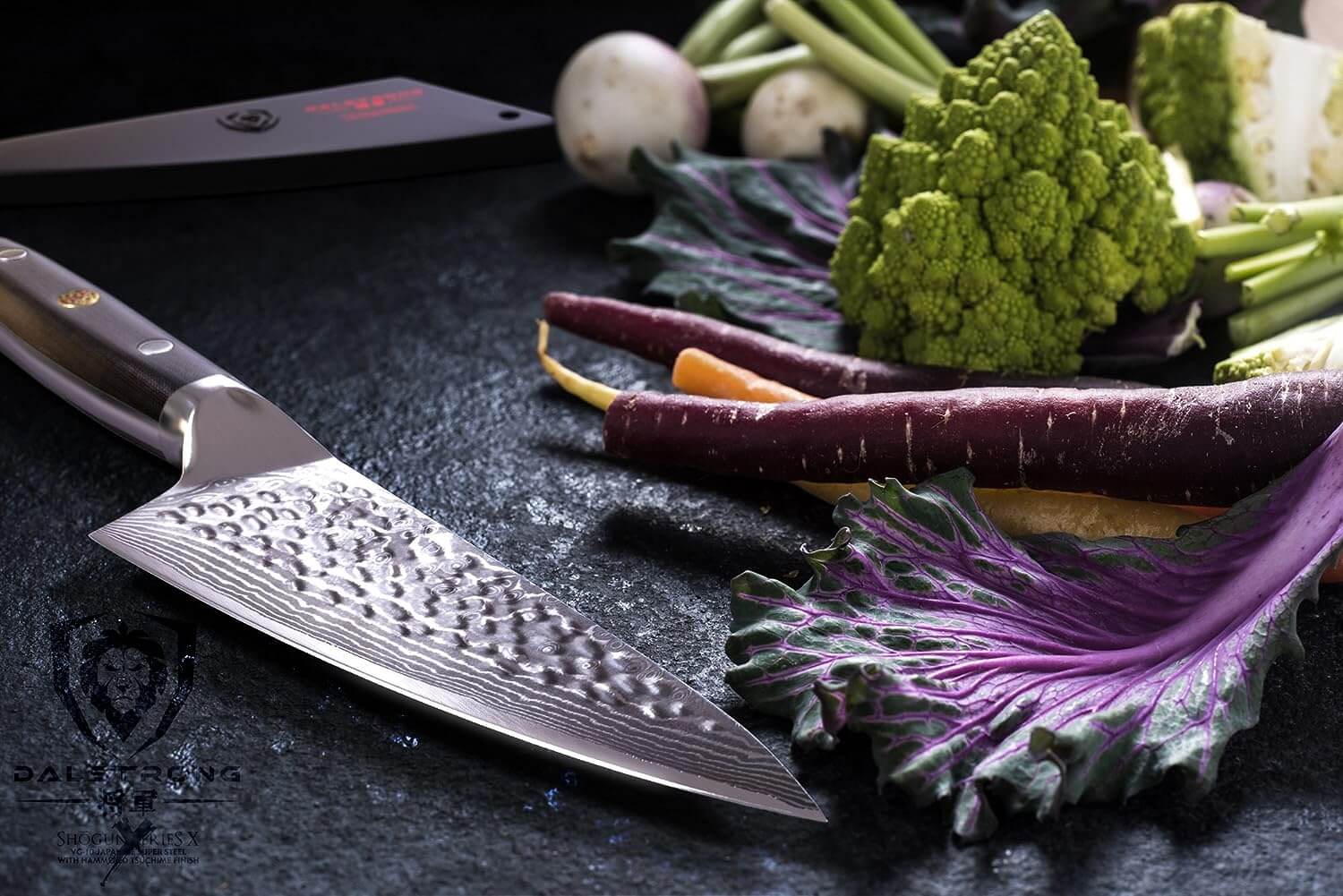In the world of culinary tools, few items carry as much mystique and allure as the Damascus chef knife. With its distinctive wavy patterns and legendary sharpness, it's not just a tool but a piece of art, a testament to ancient craftsmanship meeting modern metallurgy.
But what gives the Damascus chef knife its unique appearance and unparalleled performance? Let's journey into the intricate world of Damascus steel, unraveling its layers and understanding the science and history behind this iconic blade.
In This Article
- History of Damascus Steel
- The Metallurgical Process
- Significance of Patterns
- Benefits of Damascus Steel
- Caring for Your Damascus Knife
- Frequently Asked Questions
- Conclusion
- Further Reading
History of Damascus Steel
Originating from ancient Syria's city of Damascus, this steel was first used in swords and is known for its sharpness. Legends spoke of blades so sharp they could cut a floating scarf in half.
While the exact ancient technique remains a mystery, modern methods have replicated the steel's unique characteristics.
The Metallurgical Process
Creating a Damascus chef knife is a blend of art and science, deeply rooted in ancient metallurgical practices. The process begins by selecting two or more types of high-carbon steel. These are then stacked and forge-welded together.
Once bonded, this block of metal is heated and then folded upon itself, doubling the layer count with each fold. This folding process can be repeated multiple times, leading to a blade that might have hundreds or even thousands of layers.
The high layer count isn't just for aesthetics. As the metal is folded and refolded, impurities are driven out, and the steel's grain structure is refined. This results in a blade that combines the best properties of the metals used: the hardness of high-carbon steel and the flexibility and toughness of softer steel.
The end product is a knife blade with superior edge retention, strength, and resilience.
Significance of Patterns
The patterns that emerge on the surface of a Damascus knife are a visual representation of its layered construction. But these patterns aren't merely superficial. They are brought to the fore through a process called acid etching.
After the knife is shaped and sharpened, it's submerged in an acidic solution. The different types of steel react to the acid at different rates, revealing the layered structure.
Each Damascus blade will have a unique pattern depending on its fold count and the metals used. Some might display tight, intricate waves, while others might showcase broader, more distinct bands.
These patterns, often resembling flowing water, wood grain, or even topographical maps, are a testament to the knife maker's skill and the intricate process of forging Damascus steel.
Every knife tells a story of its creation, with patterns as unique as fingerprints, making each Damascus knife a culinary tool and a functional art.
Benefits of Damascus Steel
Beyond its beauty, Damascus steel offers practical advantages:
- Sharpness: The forging process results in a sharp blade for longer.
- Durability: Its multi-layered structure provides resistance to shattering.
- Aesthetics: The unique patterns make each knife a conversation starter.
Caring for Your Damascus Knife
To maintain its luster and performance:
- Clean immediately after use to prevent corrosion.
- Hand wash with mild soap, avoiding abrasive scrubbers.
- Dry promptly and store in a cool, dry place.
- Regularly sharpen using a whetstone to maintain its edge.
Frequently Asked Questions
What makes Damascus steel unique?
Damascus steel is known for its distinctive patterns and multi-layered structure, providing both beauty and strength.
How do I sharpen my Damascus chef knife?
Use a whetstone and follow the knife's natural angle, gliding it across the stone.
Can I put my Damascus knife in the dishwasher?
It's best to hand wash your knife to maintain its quality and prevent corrosion.
Conclusion
The Damascus chef knife, with its rich history and intricate metallurgical process, stands as a testament to the blend of art and science in the world of cutlery. Its layers tell stories of ancient craftsmanship, while its performance speaks of modern-day metallurgical advancements.
Owning a Damascus knife is not just about having a tool; it's about possessing a piece of history, a work of art, and a symbol of enduring quality. As we continue to appreciate and utilize these knives in our kitchens, we also pay homage to the ancient blacksmiths and craftsmen who laid the foundation for this timeless masterpiece.
Further Reading
- Damascus vs. Stainless Steel Chef Knives: Comparison: Dive into a comprehensive comparison between the intricate patterns of Damascus steel and the resilience of traditional stainless steel. Understand the pros and cons of each to determine which knife suits your culinary needs best.
- Ready to dive into the fascinating realm of Damascus knives? Damas Knives presents an engaging read in their article "5 Interesting Facts about Damascus Knives," offering valuable tidbits about these exquisite blades.
- Looking for the best Damascus chef knives? Check out our comprehensive guide on the top Damascus chef knives available today.



